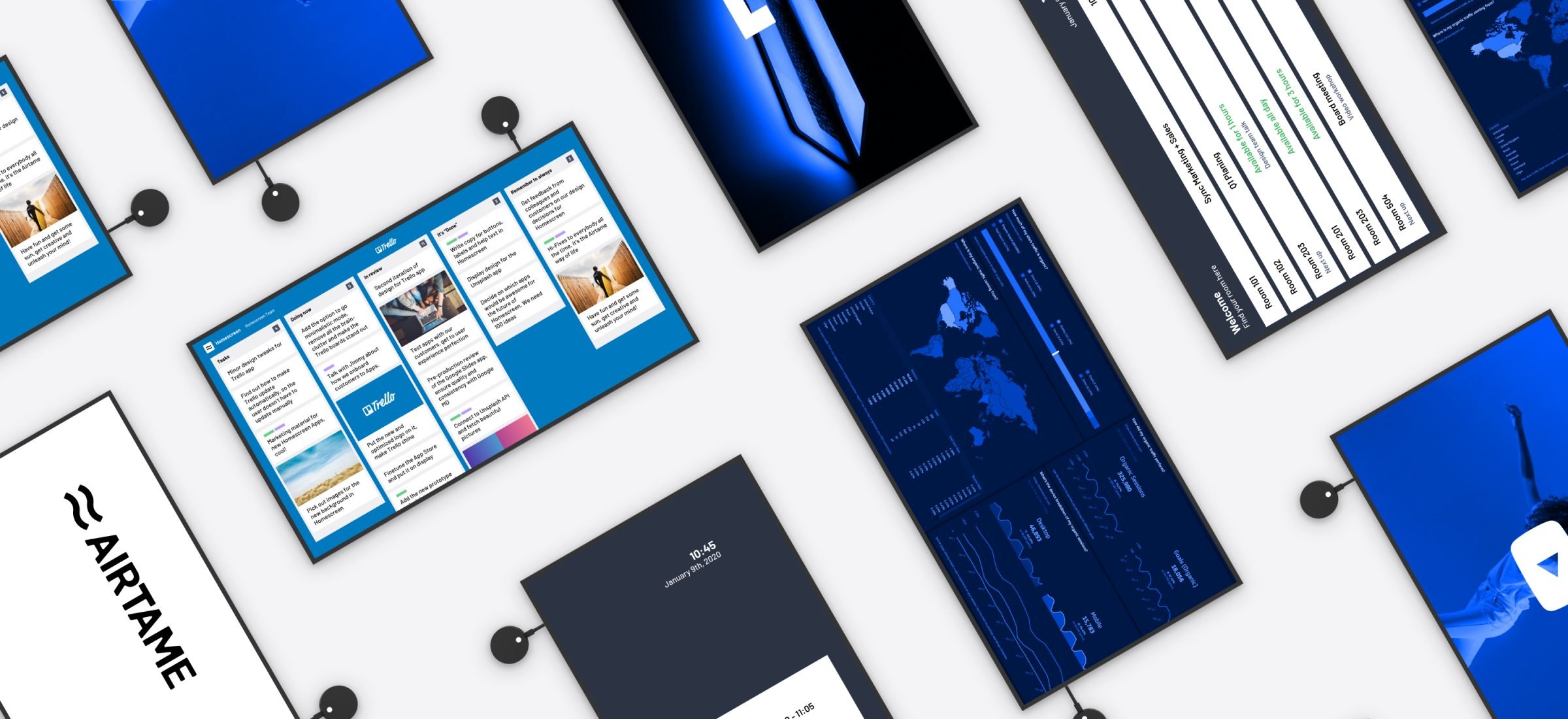
Digital signage is a network of smart screens that can display text, images, video, web pages, site-specific information (such as meeting room availability), and even works of art! It’s a terrific way to transform idle screens into dynamic sources of information.
Most organizations have a network of public-facing screens: in the lobby, factory floor, classrooms, meeting rooms, and so on. Digital signage systems allow these organizations to manage all of their screens from a central location. An administrator, or anyone with access rights, determines which content should appear on each screen.
Digital signage solutions provide a lot of flexibility in terms of content that appears on each screen. Content can vary by screen location (welcome center vs. executive suite), time of day, and information type.
Digital signage is a great way to make the most of your screens. For instance, reception area screens can display pertinent information about the organization — company news or video highlights from a school’s recent sporting event, or a church’s celebration.
Digital signage displays are also useful in creating a unified culture. Let’s say a company has set a goal to increase fourth-quarter sales by 20%. Digital signs can report status and progress in real time, and customize it to the specific location: regional sales offices, customer care, shipping, and so on. Digital signage is a great way to share KPIs and dashboards across an organization.
Unlike simple electronic screens, a digital signage system can deploy smart energy saving strategies, by automatically shutting down signs that aren’t in use. For instance, a digital signage system can be programmed to shut off classroom-based digital signs during the weekends and in the evenings when school’s out for the day.
Content distribution to screens in classrooms, meeting rooms, church halls or factory floors is the biggest challenge of digital signage networks. Some signs will display information suitable for the public to see, others may be more confidential, such as sales data.
The more sophisticated digital signage solutions have robust features to control content distribution from a central location. For instance, Airtame Cloud allows administrators to control screen content from a single location, as well as designate content rights to appropriate parties (e.g. the VP of sales can determine which content to show on screens seen by sales teams).
Cloud-based content distribution allows for maximum flexibility — idle screens in conference rooms can display the company’s logo, along with details for connecting to the screen, WiFi password and so on.
Another option is to integrate smart screens with a calendar system, so that people can check room availability from the screen.
Digital Signage Offices
Airtame 2 offers a powerful, turnkey digital signage solution. Learn about the power of digital signage with Airtame Cloud or contact our sales team to learn more.